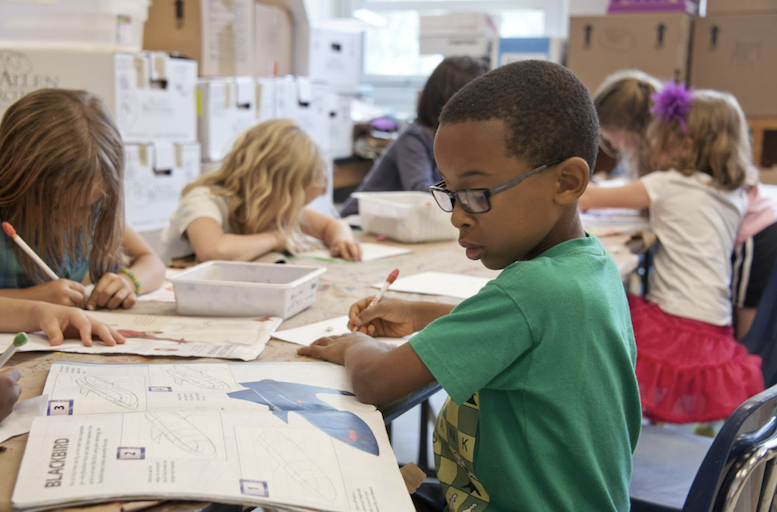Seasoned Education Leader Dr. Lance Gibbon Examines Changes Americans Want in Education: How Will Schools Respond?
Dr. Lance Gibbon, a skilled and experienced education leader, unpacks what Americans say they want in their schools, the current educational reality, and hope for change.
One of the best-designed studies in years to examine perceptions of public education, the Purpose of Education Index by Populace, reveals what the “American public wants most — and least — from K-12 education today.” Its findings fly in the face of many long-standing beliefs and assumptions about U.S. schools. The results should give leaders in education, policymakers, and local communities pause, and prompt an in-depth reevaluation of where our school systems are headed. Let’s see what the report had to say.
Key findings in the report
- College Should No Longer Be the End Goal of K-12 Education: By and large, high school credit requirements, exit exams, and state tests are all geared to prepare students for a four-year college. There were already growing concerns about this focus, and Populace found that out of 57 possible priorities for K-12 education, Americans ranked college as the 47th lowest. This prompts even more questions about such a heavily college-oriented system, especially when just over a third of high school graduates will complete college.
- Practical Skills & Outcomes Should Be the End Goal: American schools generally emphasize a “liberal arts” education, often incorporating more abstract curriculum and requirements. Yet, making sure that students have practical, tangible skills and outcomes was ranked as the #1 priority for education by Americans. This was far above other lofty ideals and purposes for education. Americans clearly want more hands-on and practical learning, including career education, for students.
- Individualized Education Is the Future; One-Size-Fits-All Is the Past: While individualization is a buzzword widely used in schools today, the reality is that the one-size-fits-all model remains the dominant approach with uniform curricula, standardized tests, and fixed timelines for courses and assignments. By contrast, Americans overwhelmingly prefer an education designed to meet individual student needs, including flexible pacing and extra help when needed.
- Education Priorities Vary Immensely by Race: The notion of a primarily one-size-fits-all model is even more questionable in light of the significant differences in the results by race. Critical thinking skills were common priorities for all groups, but other results were widely varied. An education system that fails to allow for local differences to meet the unique needs and preferences of children and families will fail to result in positive outcomes for the students or the community it serves.
- “Better” Is No Longer the Goal — “Different” Is: According to Populace, “Americans are fed up with the current education system, beyond the point of wanting improvements to the existing structure.” Americans want to see meaningful, even significant, changes in the way that education works (or doesn’t) in America, but can we get there?
Why is education stuck in the past?
Americans today want schools to focus on practical skills. This is exactly what philosopher and educational reformer John Dewey was promoting almost 100 years ago. With an emphasis on hands-on, project-based learning, community connections, and real-world problems, you’d think Dewey’s Experience in Education (1938) was pulled straight from the pages of the latest educational journal. If these ideas have been around for so long, why haven’t they taken hold?
There seems to be a gravitational pull back to the educational factory system. A traditional, standardized model is simply easier to implement, manage, and measure. Scores, reports, and metrics evaluate the “results” of our factory’s productivity and efficiency. Formulaic, scripted curriculum, prescriptive pacing, and checklists ensure each student receives the same inputs. But the same outputs? Not so much. Our students are humans, not widgets, each with unique needs, strengths, experiences, and backgrounds.
How do we create a new future for our children?
According to the study, Americans agree that change is needed. The growing discontent and disconnect between public education and the public at large means something has to give. But, the path forward remains hotly contested. Here are a few ways we might start:
- A team effort: So often, the media portrays families and schools as being at odds and fighting each other. It’s no wonder there is a lack of trust in our school systems. Change will only happen if both groups see the other as partners on the same side as the child. In their book Street Data, Safir and Dugan describe how this is possible through a much more personalized and holistic view of student learning. Families must be welcomed and more meaningfully engaged in their children’s education.
- Higher education reforms: Most high school graduation requirements and courses are a direct result of college entrance standards and expectations. An overhaul of what colleges require, the programs and courses they offer, and greater flexibility are needed to support changes in K-12 education. Much has been made of the high price of college, but the increased focus by students, families, and educators on the growing lack of relevance and poor quality of college instruction are catalysts for reform.
- Restructure education laws: In general, legislative mandates tied to funding dictate (or heavily influence) the curriculum, standards, programs, and instructional methods in schools. Change requires that families, educators, and educational organizations come together and demand reduced mandates, greater flexibility, and increased local control. This is understandably more complex to manage and implement at a system level, but the current one-size-fits-all approach is really one-size-fits-none.
It is easy to be discouraged by the lack of change in education despite countless educational innovations and reform efforts. Thankfully, the results of the Populace study provide us with a renewed springboard for conversation and hard data that can precipitate change, as long as we choose to act.
About Lance Gibbon
Dr. Lance Gibbon is a dynamic leader in the field of education in the Puget Sound area who excels at providing student opportunities, cultivating connections, and promoting positive, inclusive learning and work environments. He is a passionate community supporter, volunteer, and board member, and was twice recognized as Community Leader of the Year.










